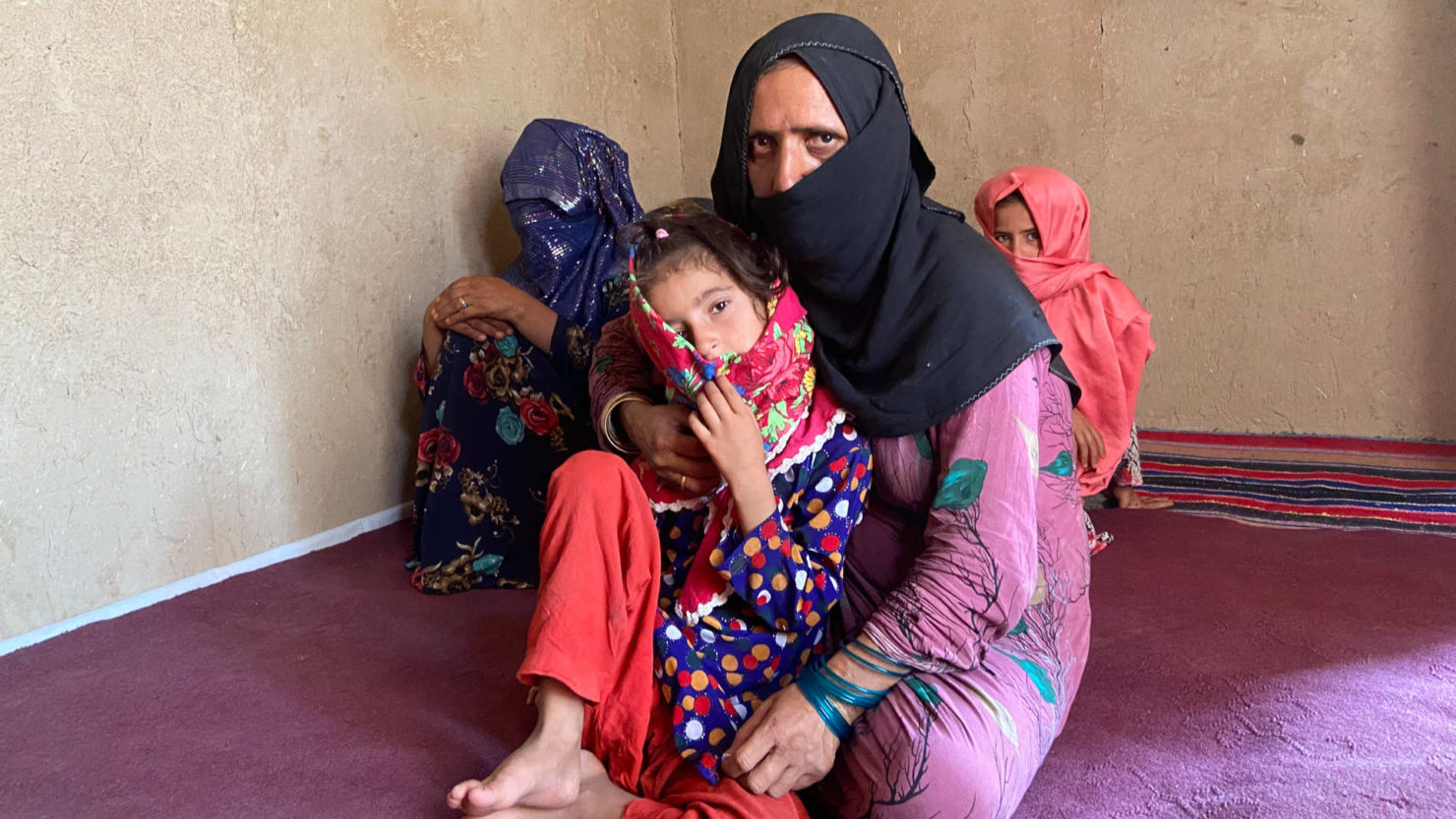IN MARCH OF LAST YEAR, Rabia and her two young daughters were forced to leave their home in northern Afghanistan. While facing the threat of increased violence, their village was also in the midst of a severe drought that strained the water supply and devastated crops. Rabia could no longer raise her sheep, which had provided a steady source of income. She was estranged from her husband and lived with her brother before he was killed in a Taliban attack. She said she depended on his family for additional support. But they were farmers, and without water, wheat, maize, and other crops would not grow. Out of desperation, the entire clan packed up and moved, hoping to find work outside their village.
They eventually settled at a camp for internally displaced persons, Nawabad Farabi-ha located outside the northern city of Mazar-i-Sharif. In early August, Rabia sat with her daughters on the mud floor of their current home: a one-room structure with mud walls and a thatched roof. Rabia, who like many Afghans, goes by one name, recalled the months leading up to their journey. “The land dried up, and the violence worsened,” she said, referring to the fighting between the Taliban and Afghan forces. “We had nowhere else to go.”
Rabia and her daughters are among the nearly 500 families at the camp who have fled drought and violence. According to UNICEF, as of October, more than 682,000 Afghans were internally displaced. They left their homes seeking food, work, and safety — but even still, they face fraught decisions. This past February, Rabia’s oldest daughter, 11-year-old Shukria, was betrothed to a man nearly twice her age, in exchange for flour, rice, and cash to sustain her family in the coming years. “I know my daughter is a child, and it was too early for her to be married,” Rabia explained. But without the ability to provide for Shukria and her sister, Rabia said she had no other choice. “It was either her marriage or our funerals.”
Shukria, thin and soft-spoken, did not protest the decision. At the time of the August interview, she was attending a local madrassa in her community to study the Quran. At home, she was learning to cook and sew, she said, “so I can be a good wife.”

Rabia and Shukria stand outside their humble mud home in the Nawabad Farabi-ha camp for internally displaced Afghans. Extreme droughts in the region have forced thousands of families who depend on agriculture to leave their homes in search of better opportunities. “It was either her marriage or our funerals,” said Rabia. Visual: Ruchi Kumar for Undark
Child marriage is not a new phenomenon in South Asia, and despite attempts to legislate against it, the practice remains common across Afghanistan. Reports suggest a spike in such marriages, spurred by the violence that preceded the Taliban takeover, and by the effects of climate change on this agrarian country. Over the past half century, temperatures here have risen nearly twice the amount they have globally, speeding up evaporation and leading to extended droughts. This, experts say, has decreased crop yields and plunged many Afghans into poverty as they are no longer able to make a living from the land. With few viable employment options, some families are turning to a traditional wedding custom known as toyana, whereby money is given to the family of the girl. With little time to spare, these families say, the best available option is a heart-wrenching one: to marry their daughters while the girls are still young.
Read full story on Undark
